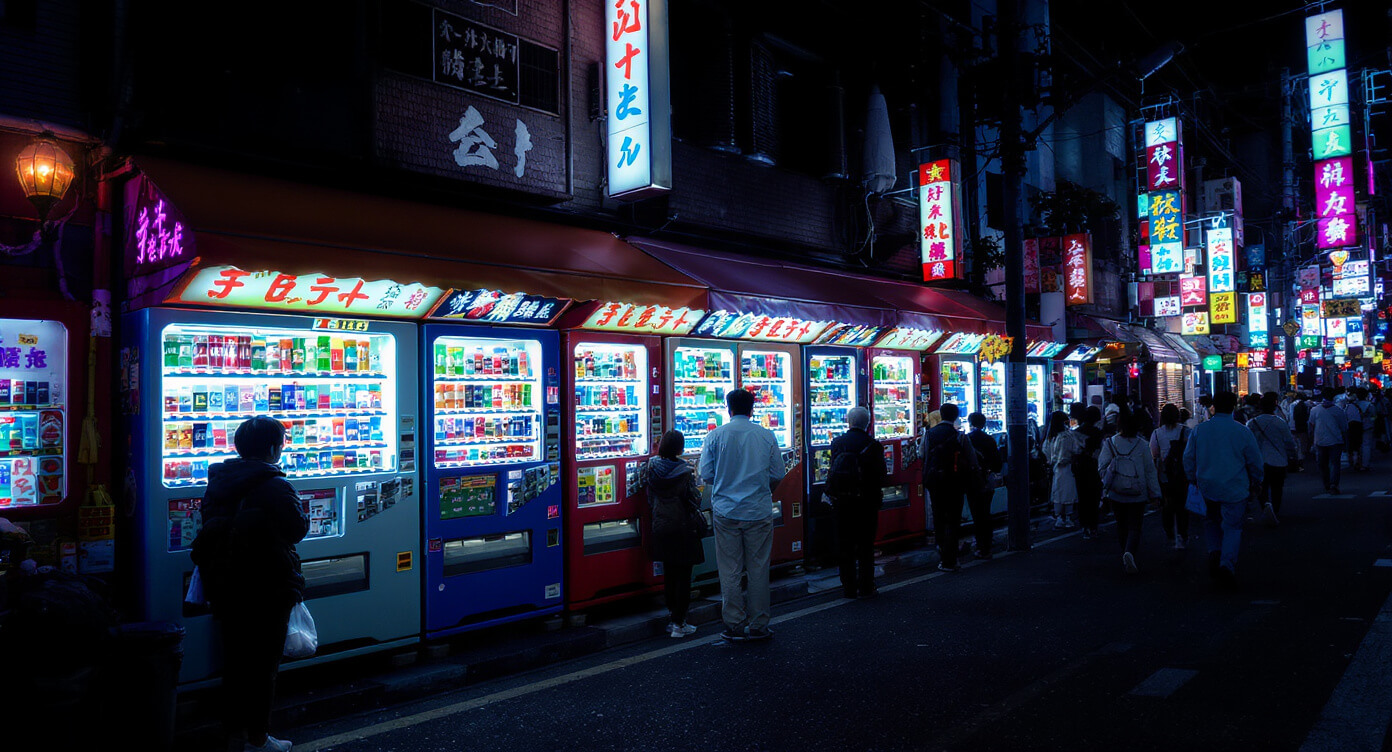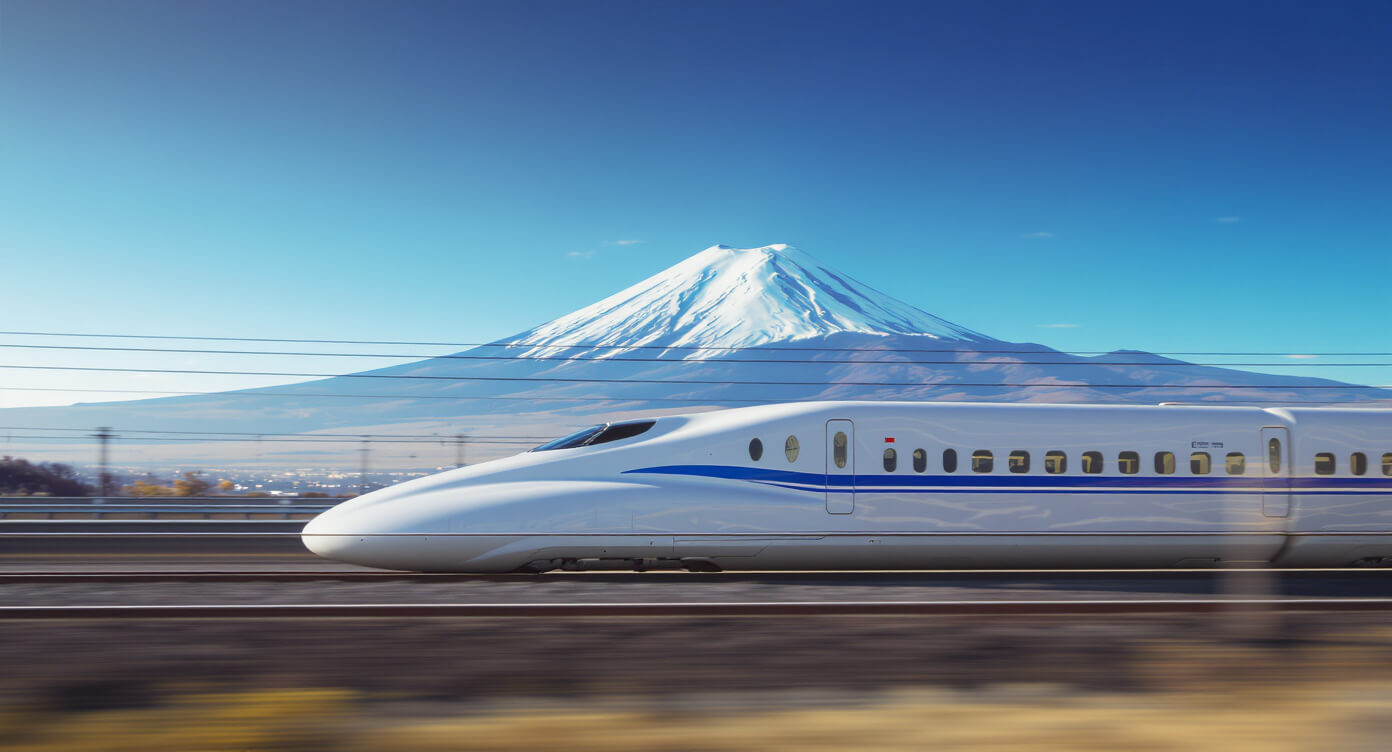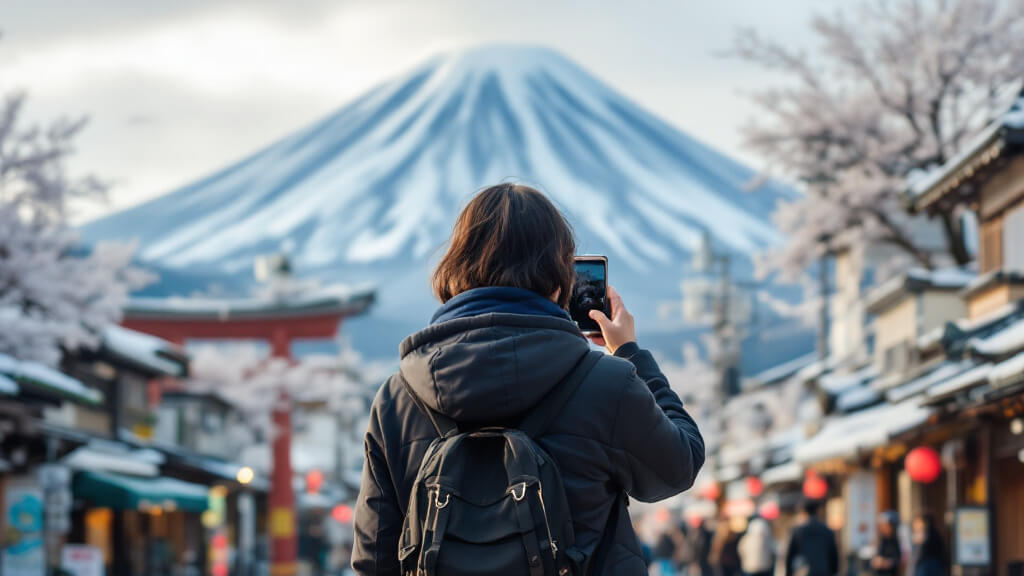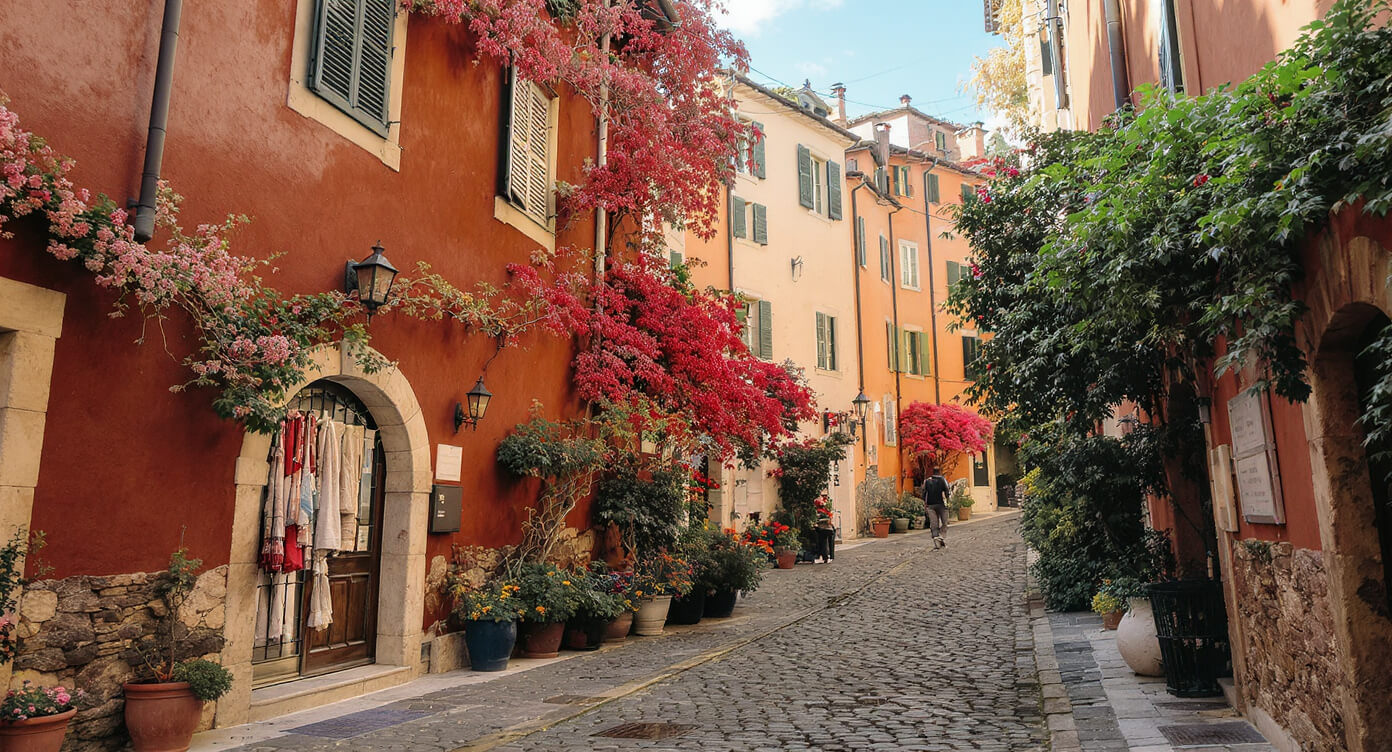Travel eSIMs you may like:
To the rest of the world, Japan may seem like a small island country in East Asia full of high-speed bullet trains and ramen noodles.
But if you dare to take a peek below the surface, you'll soon see that Japan is actually an incredible country of quirky customs and some of the world’s most wonderful people.
Read on for a few fun facts about Japan that really get to the heart of Japanese culture and what makes this country the perfect destination for your next adventure.

1. Japan Has Over 5 Million Vending Machines
Yep, you read that correctly. Japanese people absolutely love vending machines, and it's why you can find a vending machine literally everywhere in Japan, even in the smallest villages and on the occasional hiking trail.
This makes Japan the country with the highest density of vending machines in the entire world. And if you do the math (because why not), you'll come to the conclusion that there's approximately one vending machine for every 25 people in the country. Now that's a lot of vending machines.
So, What’s Inside Them?
Inside these 5 million vending machines, there's something for everyone. You've got the typical convenience products like chocolates, sweets, and drinks, but you can also purchase almost everything else, such as umbrellas, bananas, batteries, t-shirts, and a hot meal. In rural areas, you can even find locally grown produce and seasonal ingredients in local vending machines.
Beyond the necessities, you can also find vending machines selling rare toys and mystery boxes. A hotspot for this type of vending machine is in Tokyo’s Akihabara Electric Town.
2. Trains Are So Punctual They’re Considered Late if They Arrive Even a Minute Late
Japan's railway system is astonishingly precise. In fact, if a train arrives even 60 seconds behind schedule, operators may issue a formal apology. It's also not uncommon to see station staff handing out delay certificates for commuters who arrive late due to even the most minor train delays.
Unbelievably Precise Timetables
Japan's Shinkansen (or bullet train) has one of the best records in the world for being on time, with average delays typically being under 30 seconds. This level of reliability is rooted in Japan's culture of punctuality and respect for other people's time.
If you plan to travel across Japan using public transport, it's absolutely imperative to plan your day around the train's timetable, and plan it to a T so you don't miss your trains! That's why travelling with a dependable eSIM (like ZenSim) is important when visiting Japan, as it makes checking train timetables and coordinating travel so much easier.

3. Kit Kats are a National Obsession in Japan
Kit Kats are a beloved treat worldwide, but in Japan, Kit Kat culture is on another level.
In fact, over 300 quirky flavours have been released in Japan over the years, including wasabi, purple sweet potato, matcha, and sake.
Why the obsession?
The obsession with Kit Kats began in the early 2000s when Nestlé started launching unique Japanese-inspired flavours.
The name itself, "Kit Kat", also sounds remarkably close to the Japanese phrase kitto katsu (きっと勝つ), which translates to "surely win" in English. This play on words made Kit Kats become a popular gift for students preparing for exams or really anyone in need of some cheerful encouragement. Today, Kit Kats are fully ingrained in Japanese culture and can even be purchased in elegant gift boxes for special occasions.
4. Japan's National Sport, Sumo Wrestling, Dates Back Over 1,500 Years
Sumo wrestling, which is still practised today, is a living piece of Japanese ancient tradition. Sumo wrestling was originally performed as a ritual to entertain the Shinto gods. Many of these religious elements still remain, and wrestlers (called rikishi) still perform ceremonial stomps to drive away evil spirits. Other long-held traditions include throwing salt in the ring for purification and wearing the traditional mawashi belts.
Where You Can Watch It
There are six sumo wrestling tournaments (called basho) held each year: three are held in Tokyo, one in Osaka, one in Nagoya, and one in Fukuoka. These tournaments draw huge crowds and last 15 days.
If you're in Japan and want to get tickets to a sumo wrestling tournament, make sure to book early, as these events often sell out. If you can't make a tournament, you can also visit a heya, which is the Japanese word for a sumo wrestling training centre, to watch practice sessions. You may also be able to find shorter, ceremonial matches at local festivals.
5. Japan Has an Island Entirely Populated by Rabbits
On the little island of Ōkunoshima, you can find hundreds of friendly rabbits roaming freely. That's why this particular island of Japan has earned the nickname “Rabbit Island.”
How the Rabbits Got There
Ōkunoshima Island was originally a secret military base where chemical weapons were developed during World War II.
How all the rabbits got to the island, though, remains a long-debated mystery. Some scholars believe rabbits were originally brought to the island in the early 1920s to test chemical weapons and then released following World War II. Another rumour is that an elementary school released a few rabbits on the island in the 1970s, which went on to multiply and populate the island.
Whatever the case, the rabbit population on Ōkunoshima Island has flourished thanks to a predator-free environment and a steady stream of curious visitors.
6. Japanese Toilets Are Engineering Marvels
When you take a trip to the loo in Japan, it can feel a lot like taking a trip to the future. Even in modest train stations or highway rest stops, you can find futuristic-looking toilets with lots of features and buttons.
Features You Didn’t Know You Needed
Bidet functions, adjustable water pressure, seat warmers, deodorising sprays, automatic lids, the list goes on, with some toilets even having built-in dryers. And if you're a bit shy about bathroom sounds? Many toilets in Japan include a “privacy mode” that can play different songs on demand.
7. Japan Has a Festival for Crying Babies
Each year, temples across Japan host the Naki Sumo Festival. This is one of the stranger festivals in Japan, where you can find sumo wrestlers gently holding babies and trying to make them cry.
Why Crying Is Celebrated
In Japanese folklore, a strong cry is believed to ward off evil spirits and guarantee good health for the child. A priest oversees the ceremony, where two sumo wrestlers each hold a baby, and the baby who fries first (or the loudest) is declared the winner.
The most famous Naki Sumo Festival takes place at Senso-ji Temple in Tokyo around April. Other regions in Japan also have their own local versions. If you're planning on attending a ceremony, check festival dates in advance and plan your trip accordingly.
8. Japan Invented the Capsule Hotel
In 1979, Osaka introduced the world to a new kind of accommodation: the capsule hotel. Capsule hotels are compact sleeping pods, just big enough for one person to lie down comfortably. Today, they're a quintessential part of Japanese culture, drawing in millions of tourists each year.
Why They Exist and What to Expect
The idea of a capsule wardrobe began as a way to provide low-cost overnight stays for businessmen who missed their last train home. But the concept caught on, and now capsule hotels cater to tourists and minimalists looking for a no-fuss, functional night's sleep.
If you want to stay in a capsule bed on your trip to Japan, you can expect to find a mattress, reading light, power outlet, built-in alarm, and a privacy curtain or door. It's also common for capsule hotels to offer communal lounges, bathrooms, and lockers.
If you're passing through cities like Tokyo or Kyoto on your big Japan adventure, it's worth experiencing a capsule bed at least once. Making a booking, even if it's last-minute, is relatively easy - especially if you have a reliable travel eSIM in your pocket.
9. Japan Has a Street Just for Kitchenware in Tokyo
In the Asakusa district of Tokyo, you can find Kappabashi Street, which is also known as "Kitchen Town". This place is a paradise for foodies, chefs, and anyone fascinated by Japanese cuisine.
What You’ll Find in Foodie Heaven
All along Kappabashi Street, you can find shops dedicated to all things Japanese cuisine, such as razor-sharp Japanese knives, ceramic ramen bowls, tayoyaki pans, chopsticks, and beautifully crafted bento boxes. There are also shops dedicated to the famous plastic food models used in restaurant displays, a quirky and iconic piece of Japanese food culture.
Even if you're not that into Japanese cooking, visiting Kappabashi Street is still a unique experience where you can learn a lot about Japanese history through the lens of the country's food culture.
10. There’s a Train Station With No Entrance or Exit
This is one of the most interesting facts about Japan. In Yamaguchi Prefecture, you can find a train stop that's solely designed for sightseeing. The stop is called Seiryu Miharashi Station, and it's built along the Nishikigawa Seiryu Line.
What Makes It Special
When you arrive at Seiryu Miharashi Station, you'll find that it has no access roads, no buildings, and no exits. The only purpose of the station is to let passengers off to briefly admire the scenery around the station, where you can see forests and views of the Nishiki River.
The trains that do stop here typically stop for a few minutes, giving passengers just enough time to take in the surroundings and snap a few photos. There isn't even a ticket office or snack shop at this station, as the station purely exists as a place to slow down and appreciate the scenery.
If you'd like to take a train to this station on your trip to Japan, make sure you've downloaded a travel eSIM (like ZenSim) ahead of time, so you can double-check departure timings without missing a beat.
Bonus Fun Facts: More Traditions and Quirks You Need to Know About Japan
Need more fun facts about Japan to convince you to go ahead and book a trip already? Read on for a few more offbeat traditions and cool facts that make exploring Japan so fun.
- Japan is one of the only countries where slurping is polite: You don’t have to hold back at the ramen counter! Slurping is actually a sign of appreciation and a compliment to the chef.
- Plastic food displays are king: Outside of restaurants, you'll find detailed replicas of menu items. These replicas are works of art and have their own cult following.
- Mount Fuji is actually an active volcano: You may think Mount Fuji is a mountain, but it's actually an active volcano. It last erupted in 1707 and can still technically erupt again due to ongoing tectonic activity.
- Japan is full of cat lovers: Japanese people often see cats as a symbol of good luck and good fortune. That's why you'll find plenty of cat cafés and cat-themed activities, shops, and merchandise throughout the country.
- Japan has one of the highest life expectancies in the world: Chalk it up to diet and lifestyle, but Japan is among the countries with the highest life expectancy, with data showing the average life expectancy of women to be 88 and men to be 81.
- Eating KFC on Christmas is a tradition: The first KFC shop opened in Japan in 1970, and by the mid-1970s, it had become a holiday staple for Christmas dinner!
Planning Your Next Trip Around Japan's Fun Facts
Rather than ticking off the usual sightseeing spots on your visit to Japan (so boring!), why not plan your trip around some of your favourite fun facts?
You could...
- Chart a cross-country vending-machine tour.
- Time your trip around a sumo tournament or festival.
- See how many capsule pods you can stay in.
- Collect as many different Kit Kat flavours you can find.
Chasing Japan's offbeat cultural quirks can give your trip a unique sense of purpose, a purpose that you definitely won't find in traditional guidebooks.
Travel eSIMs you may like:

Written by Holly Grace Callis
Freelance content writer, a big fan of spicy margs.
Holly is our resident digital nomad making the beaches of Mexico home. You’ll usually find her somewhere in LatAm furiously typing about hidden Europe spots or how to wrangle more data from your e-sim deal. After all, it’s not nomad life if you can’t post it on the ‘gram.
Let's connect on LinkedIn 👉
Get amongst it
Join the community
We will reach out when we launch new products, about our sustainability projects, specials, new innovations or maybe even cool sh*t we think is inbox worthy.












